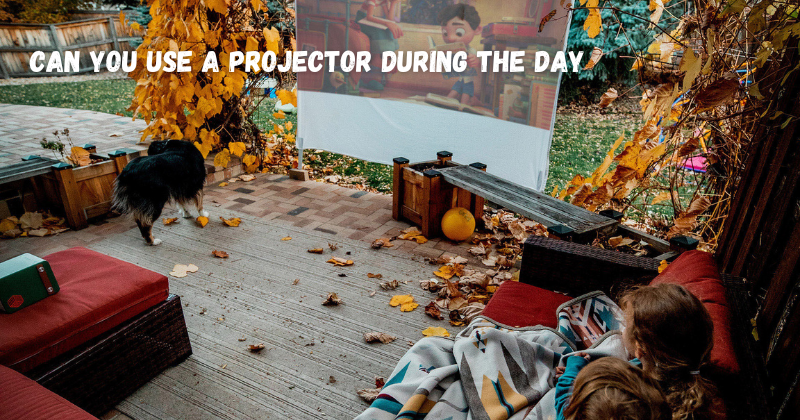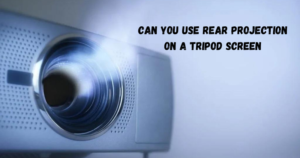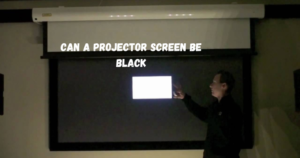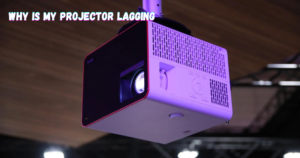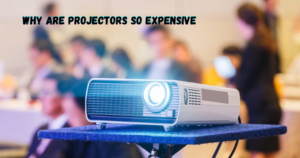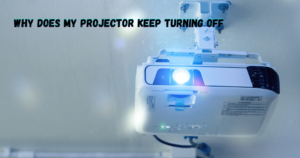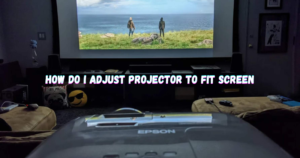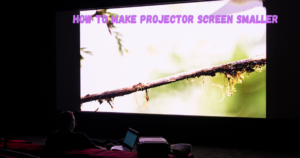Introducing the question of whether one can effectively use a projector during daylight hours raises a common dilemma in the realm of multimedia technology.
Projectors have long been a staple for delivering presentations, enjoying movies, and sharing content, but their performance is often closely associated with ambient lighting conditions. This inquiry delves into the practicality and limitations of using a projector in well-lit environments.
As we explore this subject, we will consider various factors that influence a projector’s performance during the day, including the projector’s brightness, screen type, and the space’s natural lighting. Understanding the dynamics of projector usage in daylight is essential for making informed decisions about when and where to deploy this versatile technology for optimal viewing experiences.
Do Projectors Work During The Day
The short answer is yes, and projectors can work during the day. However, their effectiveness and visibility will depend heavily on several factors that we will discuss in detail. Before delving into these elements, it’s crucial to understand how projectors function.
Projectors display images by beaming light onto a surface through a lens system. The light source may vary depending on the type of projector, but most modern projectors use high-intensity lamps or LEDs.
When projecting onto a screen or wall, the ambient light in the room impacts how well the projected image is perceived. This is why using a projector during daylight hours can be challenging. Furthermore, the projector’s brightness, measured in lumens, plays a crucial role in determining its performance under natural lighting.
Can You Use A Projector During The Day
There are several factors to consider when using a projector during the day. These include the ambient lighting conditions, the brightness of the projector, and the type of screen being used.
Ambient Lighting Conditions
As previously mentioned, ambient lighting plays a significant role in how well a projected image is perceived. The more natural light in a room, the dimmer the projected image will appear. In a well-lit environment, a projector’s display may be washed out or difficult to see. Therefore, it is essential to control the ambient lighting in the room when using a projector during daylight hours. Furthermore, certain types of natural light, such as direct sunlight or fluorescent lighting, can produce glare on the projected image, making it even more challenging to see.
Projector Brightness
Projectors come with varying levels of brightness, measured in lumens. The higher the lumen count, the brighter the projected image will be. When using a projector during daylight hours, it is crucial to choose one with a high lumen count to combat the natural light in the room.
For example, a 1000-lumen projector may work well in a darkened room but may perform less effectively in a naturally lit space. In this case, opting for a projector with a higher lumen count, such as 2000 or more, would be recommended. However, this also comes with a higher price tag.
Screen Type
Another essential factor to consider when using a projector during the day is the type of screen being used. A plain white wall may suffice in a dark room, but it will not provide sufficient contrast and visibility in a well-lit environment. In this scenario, a high-contrast projection screen or ambient light-rejecting screen would be ideal.
Inflatable screen options, such as inflatable screens, are also designed to be used outdoors during the day and can provide a better viewing experience compared to projecting onto a wall. It really feels like you’re at the movie theater, and when you’re watching a projector outdoors, it’s even more enjoyable. Portable projector options are also available for those looking to use a projector during the day in various locations.
These screens are designed to absorb and reject ambient light, resulting in a brighter and more vibrant projected image. However, these specialized screens can be costly and may only be necessary for some applications. Projector screen size also plays a role in the overall visibility of a projected image during daylight hours.
Purchase a High Lumens Projector
The key to effectively using a projector during daylight hours is to consider all the factors mentioned above and choose a high-lumen projector. While it may be tempting to opt for a budget-friendly low-lumen projector, it will not provide satisfactory results in well-lit environments.
Investing in a high-quality, high-lumen projector will ensure that you can use it both day and night without sacrificing image quality. Furthermore, purchasing a projector with multiple lumen modes can also be beneficial as it allows for adjustments depending on the ambient lighting conditions.
How Many Lumens Are Required If You Use A Projector During The Day
The number of lumens required when using a projector during the day will vary depending on the ambient lighting conditions and screen type. As a general rule, it is recommended to use a projector with at least 2000 lumens for daylight viewing. However, this number can go up to 3000 or more if projecting onto a large screen or in extremely bright environments.
It’s always best to consult with a professional or do thorough research before purchasing a projector for daylight use. Outdoor viewing may also require additional considerations, such as using a canopy or shaded area to control ambient light. Building home theater rooms or utilizing indoor spaces with controlled lighting can also provide better conditions for using a projector during the day.
Can we use a low-lumen projector during the day?
While low-lumen projectors may be more budget-friendly, they are not recommended for use during daylight hours. These projectors are best suited for dark environments and will not provide satisfactory results in well-lit spaces.
It’s always best to invest in a high-lumen projector if you intend to use it during the day regularly. However, for occasional outdoor movie nights or presentations, a low-lumen projector may suffice if the ambient lighting can be controlled. Movie projector rentals are also a cost-effective solution for one-time events.
Can Sunlight Damage The Projector Screen
While sunlight may not damage the projector itself, it can affect the screen used to display the projected image. Exposure to direct sunlight for extended periods can cause discoloration or fading of the screen material and impact its lifespan.
To prevent this, it’s essential to use a screen that is specifically designed to withstand outdoor conditions if using a projector during the day outdoors. Additionally, it’s crucial to store the screen away from direct sunlight when not in use.
Overall, with proper care and maintenance, a projector screen can last for years without any damage from sunlight. Inflatable projector screens are one of the best solutions for outdoor projection after using best screen you will enjoy best picture quality.
FAQs
Is it safe to run a projector all day?
Yes, it is safe to run a projector all day. Most projectors are designed for continuous use and have built-in cooling systems to prevent overheating. However, it’s always best to check the manufacturer’s guidelines for recommended usage time and maintenance procedures.
Which is better TV or a projector?
It depends on your specific needs and preferences. Projectors offer a larger display size, making them ideal for movie nights or presentations. They also tend to be more budget-friendly compared to large TVs. However, TVs have better image quality and can be used in well-lit environments without any issues.
Where do you put a projector in a home theater?
The projector should be placed on a stable surface or mounted securely to the ceiling in front of the audience. This will ensure that the projected image is not obstructed and can be viewed comfortably from all angles. Additionally, it’s essential to consider ambient lighting and screen type when positioning the projector for optimal viewing experience. The best placement for your projector will also depend on where your projector screen fits best in your outdoor space.
Conclusion
In conclusion, the question of whether one can effectively use a projector during the day is not a simple yes or no answer but rather a nuanced consideration of multiple factors. While it is indeed possible to use a projector during daylight hours, it comes with its set of challenges and limitations.
The key determinant of success is the projector’s brightness, often measured in lumens. High-brightness projectors are more suitable for daytime use, as they can combat the effects of ambient light to a certain extent.
Ultimately, the effectiveness of using a projector during the day depends on the specific circumstances and the quality of the equipment. While it may not rival the clarity of a nighttime projection, it can still provide an enjoyable viewing experience for various applications.
As technology continues to advance, we can expect projectors to become even more daylight-friendly, further blurring the lines between day and night usage. Therefore, understanding the interplay between projectors and daylight is crucial for making informed decisions and maximizing the versatility of this technology in different scenarios.
